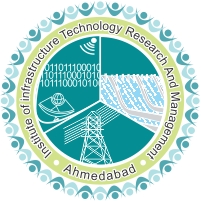Hybrid Structure of Ionic Liquid and TiO2 Nanoclusters for Efficient Hydrogen Evolution Reaction
Authors :- D. K. Pandey, H. L. Kagdada, A. Materny, Dheeraj K. Singh
Publication :- J. Phys. Chem. A, 125 (2021) 2653–2665.
Hydrogen energy has received significant attention in the renewable energy sector due to its high energy density and environmentally friendly nature. For the efficient hydrogen generation from water, the hydrogen evolution reaction (HER) has to be optimized, which requires a highly efficient electrocatalyst. In this work, a hybrid structure of the ionic liquid (IL) 1-ethyl-3-methylimidazolium trifluoromethanesulfonate (C2mim TfO) and (TiO2)n nanoclusters with n = 2–12 has been investigated in the pursuit of new catalyst materials for effective HER. We have employed state-of-the-art density functional theory (DFT) computations to depict the HER catalytic performance of IL/(TiO2)n hybrid systems through Gibbs free energy (ΔG) and an exchange-current-based “volcano” plot. We have explored the effect of the TiO2 nanoclusters on the structural and electronic characteristics of the IL, calculating the adsorption energy, the energies of the highest occupied (HOMO) and lowest unoccupied molecular orbitals (LUMO), the HOMO–LUMO band gap Eg, and the work function ϕ. The variation in size of the TiO2 nanocluster in the IL/(TiO2)n hybrid system was found to have a significant influence on the electronic properties. The obtained results suggest that the ΔG of the hydrogen adsorption is remarkably close to the ideal value (0 eV) for the IL/(TiO2)5 system, which also reflects from the volcano plot, suggesting that this complex is the best HER catalyst among the studied systems; it might be even better than the traditional Pt-based catalyst. Thus, the present work suggests ways for the experimental realization of low-cost and multifunctional IL-based hybrid catalysts for clean and renewable hydrogen energy production.

